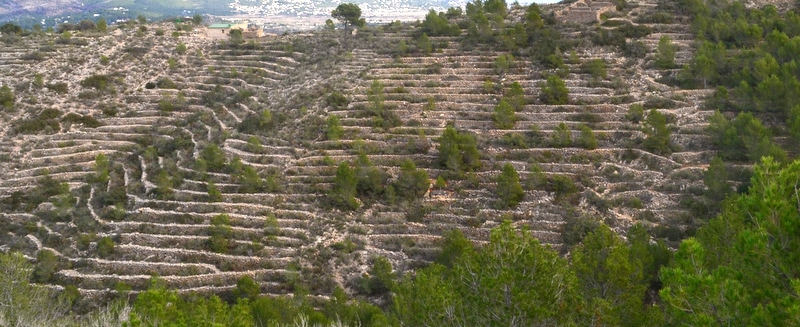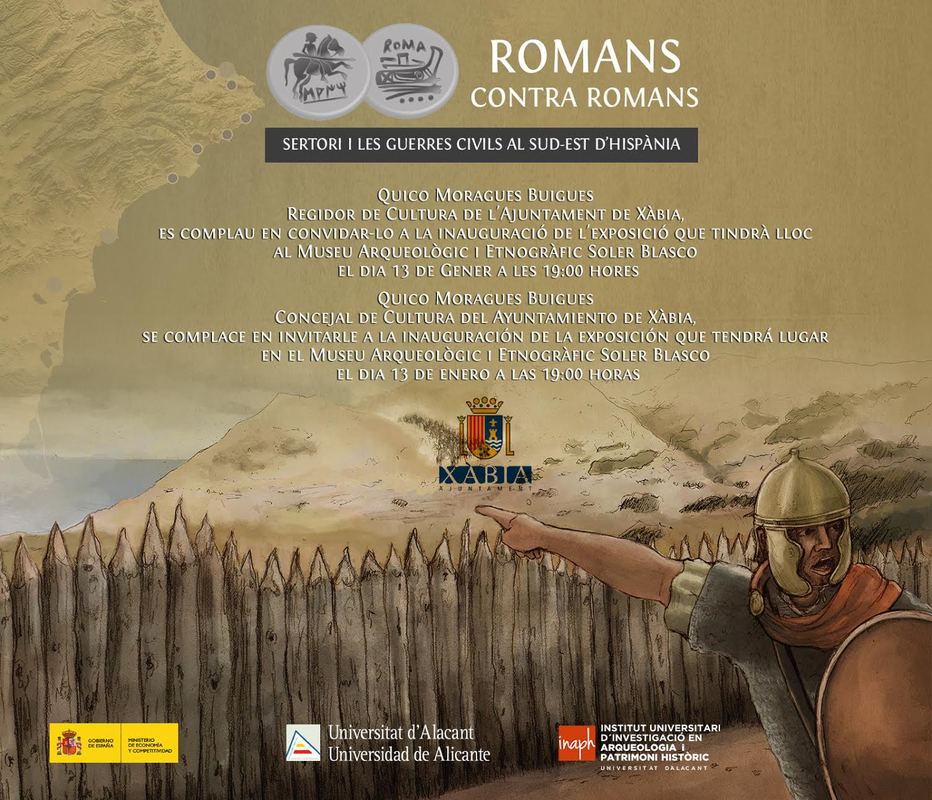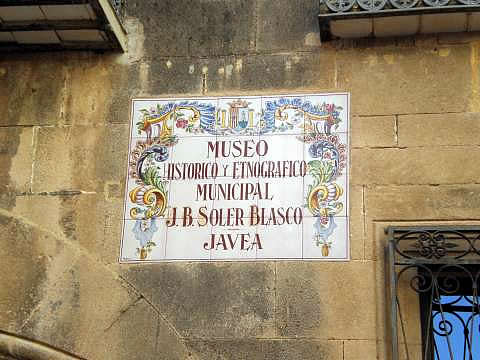|
7.00pm - Wednesday 1st February - Museu de Xàbia
The exhibition "Romans vs Romans" is mainly in Spanish, but before the AMUX AGM on Wednesday February 1st, archaeologist Josep Castelló will provide short, 30 minute, guided tour of the exhibition in English.
0 Comments
ANNUAL GENERAL MEETING OF AMUX
Wednesday 1 February 2017, 18.30 h. The Annual General Meeting of the association Friends of the Museum of Xàbia will take place on Wednesday 1 February, in the Museum, from 18.30 h. There will be a period of one hour to visit the exhibition “Romans against romans”. You will also be able to renew your AMUX subscription. At 19.30 the Annual General Meeting will take place in the Museum Auditorium. AGENDA 1. Minutes of the previous AGM 2. Address by the President and by the vice President and councillor for culture, Quico Moragues 3. Financial statement from the Treasurer 4. Report from the Secretary on the activities in 2016 and the programme for 2017. 5. Any Other Business After the meeting we invite you join us for refreshments and the opportunity to meet together informally. Wednesday 18 january 2017, 19,30 h at Museum
Joaquim Bolufer will give a talk about techniques and the architecture of dry stone structures in Xabia Sunday 22 january, 10,00 Route along the base of the Montgó to see some examples of dry stone constructions THE TECHNIQUE AND ARCHITECTURE OF DRY STONE STRUCTURES IN XÀBIA Dry stone is a traditional construction technique in which stones are embedded without mortar and only soil is used to fill the holes. Dry stone is present in the oldest human constructions, and especially in our Mediterranean environment where stone abounds. Agricultural landscapes have been constructed with this technique, defined, to a large extent, by banks and other structures built in stone. First, in the flatter and optimum areas for cultivation, and then, as social and demographic changes increased the pressure on the territory, up the slopes of the hills and mountains. There are many and extensive areas of Xàbia that maintain those old landscapes of staircases and terraces with banks of dry stone in mountain areas, but also in other less steep areas which are now largely occupied by the urban development of the town. But the dry stone technique has not been the exclusive heritage of the "disadvantaged"; Other constructions and structures of the traditional world have used it: lime kilns, scalding stoves, textile ovens, wells, shacks, raisin drying racks and others. Exhibition- inauguration 13th January - Museu de XàbiaThis exhibit features the results of the research project: "The Traces of the Roman Wars in southwest Hispania".
The project studied the network of forts or "castella" built by General Sertorius in around 77 B.C. on different hills of the north Alicante coast. By means of panels and and audiovisual display, the exhibit offers a didactic route through the “castella” with the option to admire: their walls, the daily life of the soldiers, the military equipment, the kitchen utensils, coins, etc. |
ACTIVITIES
Categories |
- Home
- Blogs
-
Projectes
- Premio de Investigación - Formularios de Inscripción
-
Traducciones Translations
>
-
DISPLAY PANELS - GROUND FLOOR
>
- THE STONE AGES - PALAEOLITHIC, EPIPALAEOLITHIC AND NEOLITHIC
- CAVE PAINTINGS (ARTE RUPESTRE)
- CHALCOLITHIC (Copper) & BRONZE AGES
- THE IBERIAN CULTURE (THE IRON AGE)
- THE IBERIAN TREASURE OF XÀBIA
- THE ROMAN SETTLEMENTS OF XÀBIA
- THE ROMAN SITE AT PUNTA DE L'ARENAL
- THE MUNTANYAR NECROPOLIS
- ARCHITECTURAL DECORATIONS OF THE PUNTA DE L'ARENAL
- THE ATZÚBIA SITE
- THE MINYANA SMITHY
- Translations archive
- Quaderns: Versión castellana >
- Quaderns: English versions >
-
DISPLAY PANELS - GROUND FLOOR
>
- Catálogo de castillos regionales >
- Exposició - Castells Andalusins >
- Exposición - Castillos Andalusíes >
- Exhibition - Islamic castles >
- Sylvia A. Schofield - Libros donados
- Mejorar la entrada/improve the entrance >
-
Historia y enlaces
-
Historía de Xàbia
>
- Els papers de l'arxiu, Xàbia / los papeles del archivo
- La Cova del Barranc del Migdia
- El Vell Cementeri de Xàbia
- El Torpedinament del Vapor Germanine
- El Saladar i les Salines
- La Telegrafía y la Casa de Cable
- Pescadores de Xàbia
- La Caseta de Biot
- Castell de la Granadella
- La Guerra Civil / the Spanish civil war >
- History of Xàbia (English articles) >
- Charlas y excursiones / talks and excursions >
- Investigacions del museu - Museum investigations
- Enllaços
- Enlaces
- Links
-
Historía de Xàbia
>
- Social media
- Visitas virtuales
- Tenda Tienda Shop




 RSS Feed
RSS Feed
